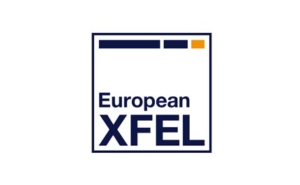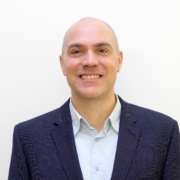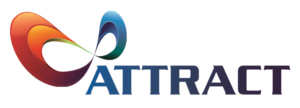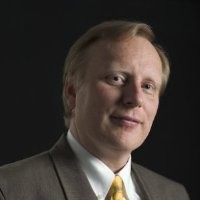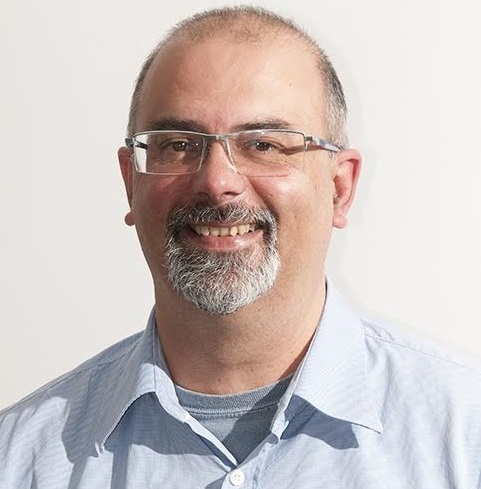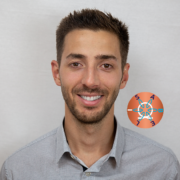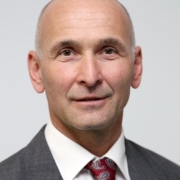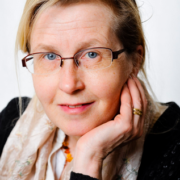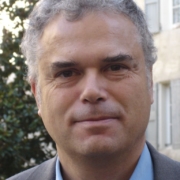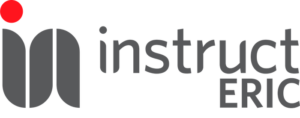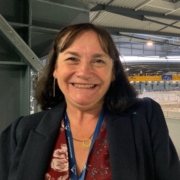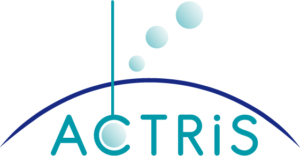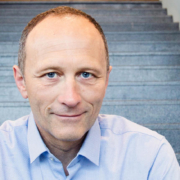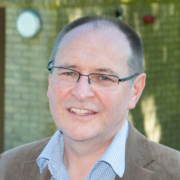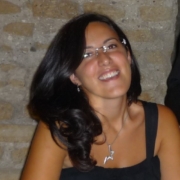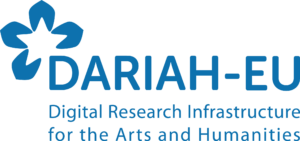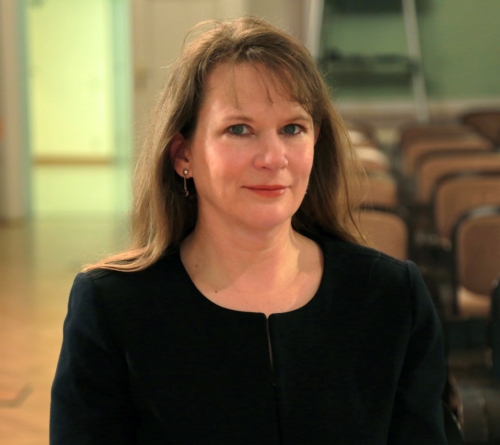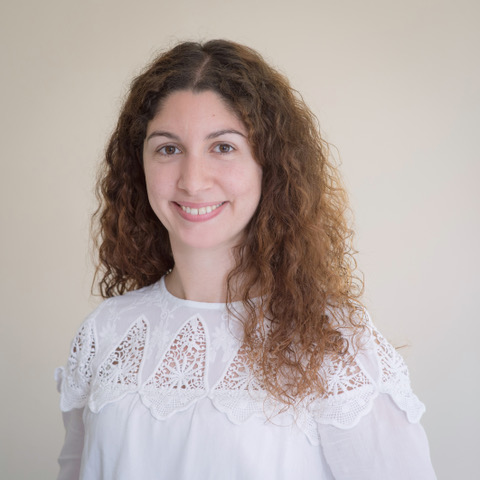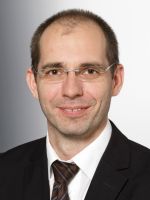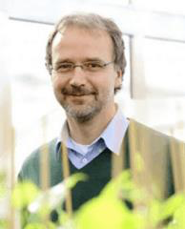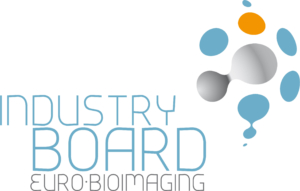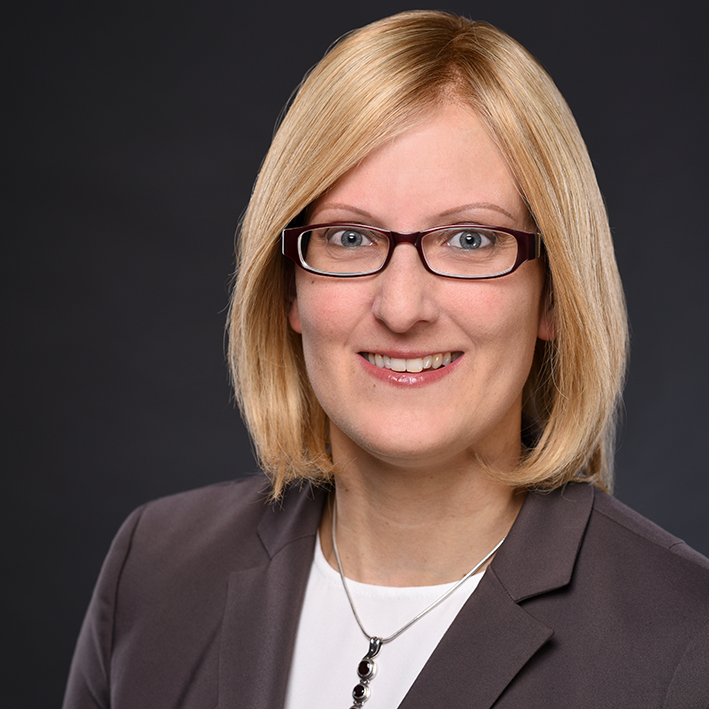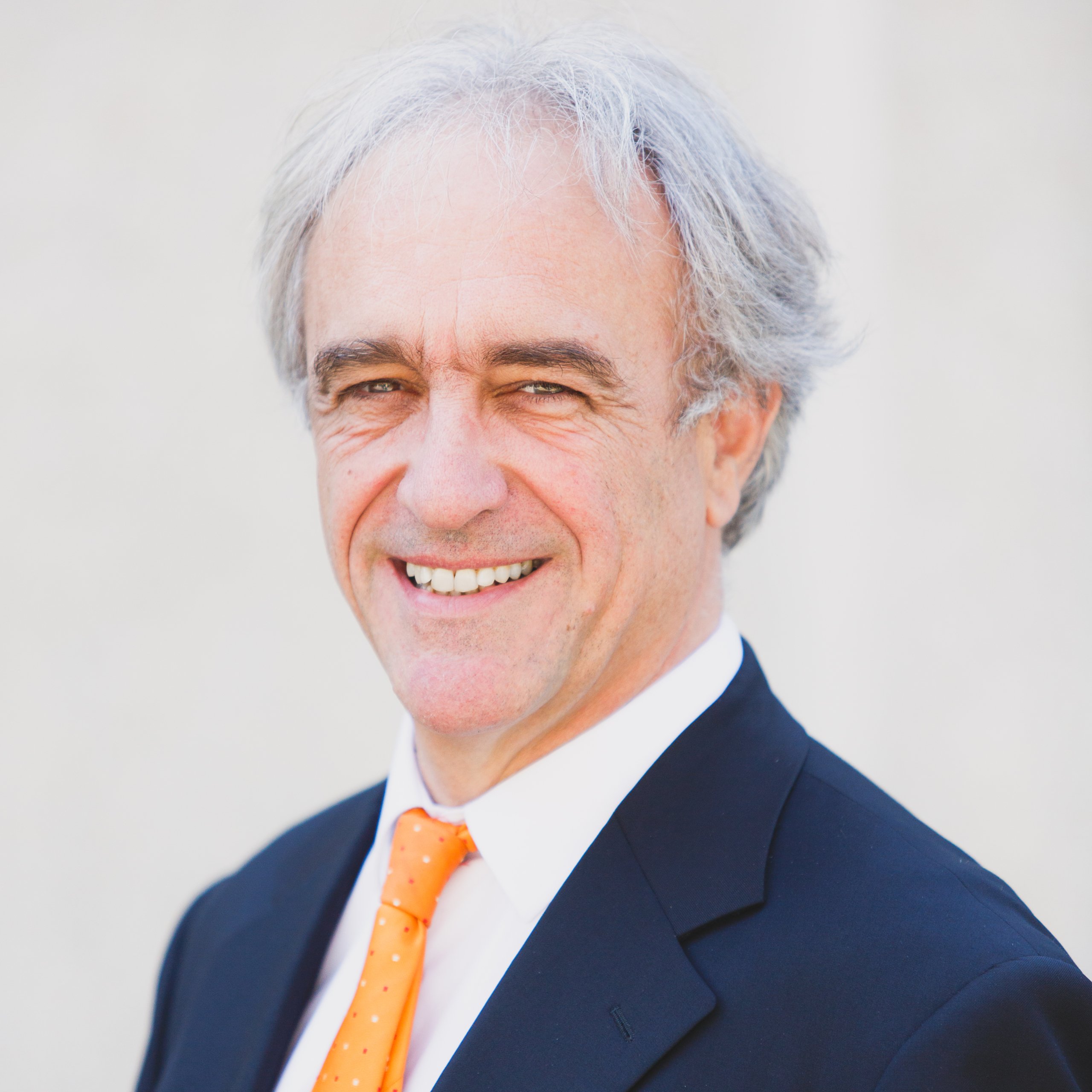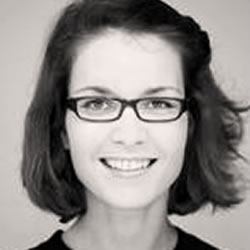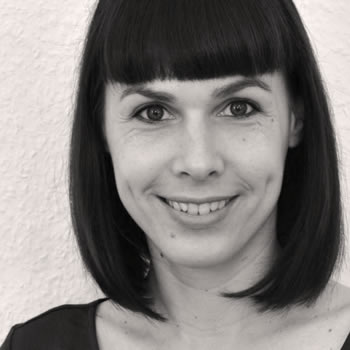Meet our Partners
In this section, we will present the projects and the professionals leading them that are in collaboration with us and the ENRIITC network! This is a working page that will continue to grow as new projects and professionals are presented within our bi-weekly newsletter.
The University of Tartu (UT) is Estonia’s leading centre of research and higher education. Founded in 1632, UT is the only classical university in Estonia and from the Baltic states it is the only one belonging to the top 1.2% of the world’s best universities.
The scientists from UT are not only members of the user community regularly working at large scale research facilities, but also actively contribute to their scientific development by providing unique research equipment and advanced technological systems for many of them including ESS, ITER, MAX IV Lab and CERN. For example, UT is leading 8 different in-kind projects contributing to the ESS instrumentation and since 2013 has proactively facilitated the Estonian ESS ILO Office, which has a goal to engage Estonian suppliers to the ESS development.
Ott Rebane acts as an Estonian Industry Liaison Officer for the European Spallation Source since 2013 and for the F4E/ITER since 2017, being involved to the ESSource Estonian consortium lead by the Institute of Chemistry, University of Tartu.
Having a background in physics and project management, as well as a personal insider view to the needs of private companies, he is placed well to mediate and combine these views and necessities of both worlds. In Estonia he acts as one of two contact points for companies looking for efficient collaboration and new opportunities with large scale research facilities.
The European Southern Observatory (ESO) enables scientists worldwide to discover the secrets of the Universe for the benefit of all. They design, build and operate world-class observatories on the ground — which astronomers use to tackle exciting questions and spread the fascination of astronomy — and promote international collaboration in astronomy. Established as an intergovernmental organisation in 1962, today ESO is supported by 16 Member States (Austria, Belgium, the Czech Republic, Denmark, France, Finland, Germany, Ireland, Italy, the Netherlands, Poland, Portugal, Spain, Sweden, Switzerland and the United Kingdom), along with the host state of Chile and with Australia as a Strategic Partner.
ESO’s headquarters and its visitor centre and planetarium, the ESO Supernova, are located close to Munich in Germany, while the Chilean Atacama Desert, a marvellous place with unique conditions to observe the sky, hosts our telescopes. ESO operates three observing sites: La Silla, Paranal and Chajnantor. At Paranal, ESO operates the Very Large Telescope and its Very Large Telescope Interferometer, as well as two survey telescopes, VISTA working in the infrared and the visible-light VLT Survey Telescope.
Also at Paranal ESO will host and operate the Cherenkov Telescope Array South, the world’s largest and most sensitive gamma-ray observatory. Together with international partners, ESO operates APEX and ALMA on Chajnantor, two facilities that observe the skies in the millimetre and submillimetre range. At Cerro Armazones, near Paranal, we are building “the world’s biggest eye on the sky” — ESO’s Extremely Large Telescope. From our offices in Santiago, Chile we support our operations in the country and engage with Chilean partners and society.
INDUSTRIAL LIAISON OFFICERS AND ESO
The role of the Industrial Liaison Officer (ILO) is to establish contacts between ESO and (potential) suppliers and to support ESO in its search for the different suitable suppliers in their respective country in order to maximize the chance to distribute the ESO contracts as fairly as possible amongst suppliers in the different ESO Member States.
In order to reach this goal the ILO’s have a formal role in identifying suitable companies in all competitive procurements above 50 kEUR. Besides this role there is a close collaboration between the ILO’s and ESO to promote ESO through industry days, webinars, seminars, company visits etc. These activities are targeted at ESO specifically but also in some cases at the Big Science as a market at large. The Big Science Business Forum is one of the results of this collaboration. This event has boosted the perception of industry that Big Science is a market with different research infrastructures that have a lot in common as well as that it has created a collaboration platform for ILO’s.
Arnout Tromp graduated as a lawyer in Amsterdam, The Netherlands in 1996 and worked ever since in the procurement field combining his legal background and his commercial skills. After working several years for an IT company, he switched to a consultancy role.
First leading the public procurement branch of a procurement consultancy firm in the Netherlands, the last ten years as a co-owner of a small consultancy specialized in contract management and public procurement. During his period as a consultant he led many large, high value, complex procurements.
He joined ESO in January 2012 as Head of Contracts and Procurement. In the picture, Arnout is presenting at a Spanish Industry Day at ESO in 2015.
Dr Andrew Williams is responsible for external relations at ESO and supports strategic relationships with current and future Member States, the EU, UN, and international organisations such as the ESA and CERN.
He serves as ESO’s representative on the Executive Board of ATTRACT – a 55 Million Euro project to create a breakthrough technology innovation process using Big Science research facilities.
Prior to ESO he worked for over a decade as senior policy advisor for NATO, with areas of expertise in strategic impact evaluation and the implications of future technologies. He began his career as a physicist for the UK government, and has a degree in theoretical physics and a doctorate in public policy.
Euro-Argo sustains and optimises the European contribution to the international Argo programme (an active fleet of about 4000 autonomous profiling floats, deployed all over the world ocean, measuring temperature, salinity and other biogeochemical parameters, from depth of 2000m-6000m to the surface), providing, deploying and operating nearly 25% of the floats network.
Argo floats provide an unprecedented free and open quality-controlled dataset to a wide range of users (operational services and scientific research).
Romain Cancouët is the Operational Engineer at the Euro-Argo ERIC Office and the technical coordinator of the Euro-Argo ERIC for the implementation of some European projects. Involved in many aspects of the Argo programme workflow, he is also experienced in data management and technical monitoring activities.
Graduated in 2008 from a French Engineering School, he also holds a MSc in Ocean & Climate Physics and has continuously worked in the field of ocean mapping and marine observations, mainly in the Research landscape. He takes part in the interactions and collaborations (tenders, partnerships, etc.) with the private sector for the Euro-Argo ERIC.
The SKAO, formally known as the SKA Observatory, is a global collaboration of Member States whose mission is to build and operate cutting-edge radio telescopes to transform our understanding of the Universe, and deliver benefits to society through global collaboration and innovation.
Headquartered in the UK, its two telescope arrays will be constructed in Australia and South Africa and be the two most advanced radio telescope networks on Earth. A later expansion is envisioned in both countries and other African partner countries. Together with other state-of-the-art research facilities, the SKAO’s telescopes will explore the unknown frontiers of science and deepen our understanding of key processes, including the formation and evolution of galaxies, fundamental physics in extreme environments and the origins of life.
Through the development of innovative technologies and its contribution to addressing societal challenges, the SKAO will play its part to address the United Nations’ Sustainable Development Goals and deliver significant benefits across its membership and beyond.
SKAO’s current Membership spans seven countries, with a broader group of around sixteen engaged in the organisation and moving to membership or cooperation in some form over the coming period. With construction activities for the first phase of SKA1 approved by our Council at the end of June, the first procurements are now being prepared.
SKAO is implementing a global ILO network to support this work, led by Ian Hastings, Head of Procurement Services. Leading a small internal team, Ian operates our member ILO team around the membership, through which contracting opportunities are advertised as part of our procurement processes.
Ian works closely with Simon Berry, Head of the DG’s Office at SKAO, who is responsible for interactions with the Council and with prospective future Member States of SKAO.
The Institute of Agrifood Research and Technology (IRTA) is a public research institute founded in 1985 to promote research, innovation, technological development, and transfer in the agri-food sector in Catalonia, Spain, and to stimulate collaboration between public and private stakeholders. Their mission is to contribute to the modernisation, competitiveness, and sustainable development of the agricultural, food and aquaculture sectors, to the supply of healthy and quality food for consumers and generally to the improvement of the population’s well-being. With this purpose, IRTA wants to become a scientific reference, an innovation and technology transfer engine and a strategic ally of these sectors.We take a transversal approach that allows us to integrate highly complementary subjects and perspectives along the whole value chain covering the following fields: Plant Production, Animal Production and Food Industries. IRTA is participating in diferent national and International research and infraestructure projects such as Metrofood-RI that develops an infraestruture for Promoting Metrology in Food and Nutrition.
Elena Fulladosa is a senior research scientist of the Quality and Food Technology program at IRTA. Her research activity focuses on the development and application of new technologies at the food industry for process optimization and non-destructive on-line characterization of food products. She has worked with several technologies based on X-rays (computed tomography, dual and multi-X ray absorptiometry), dielectric and near-infrared spectrometry and hyperspectral imaging. Her research has been developed in close contact with the food industry and industrial devices producers, contributing to the development of several in-line equipment for the dry-cured ham industry.
Svalbard Integrated Arctic Earth Observing System (SIOS) is an international partnership of research institutions studying the environment and climate in and around the high-Arctic archipelago Svalbard, to develop an efficient observing system for Earth System Science, share technology, experience and data, close knowledge gaps, and decrease the environmental footprint of science.
The observing system offered by SIOS build on the extensive observation capacity and diverse world-class research infrastructure provided by many institutions already established in Svalbard and focuses on processes and their interactions between the different spheres, i.e., biosphere, geosphere, atmosphere, cryosphere, and hydrosphere. The core observational programme of SIOS provides the research community with systematic observations that are sustained over time, yet dynamic enough to be adapted as new methods appear or new societal needs emerge.
Shridhar Jawak is a geoinformation scientist with around 12 years of experience in Earth observation (EO) and remote sensing (RS) based applications in the Earth’s cryosphere. As Remote Sensing Officer, he ensures that a substantial capability for utilising remote sensing resources (https://sios-svalbard.org/RemoteSensing) is included in the observing system to complement ground-based observations.
Shridhar’s responsibilities include to inform and advise on the emerging opportunities that broad range of EO and RS technology offer to Earth system science (ESS) researchers, optimize the usage of satellite and airborne RS (aircraft and UAVs) data for field scientists in Svalbard, communicate with space agencies to promote calibration and validation (cal/val) activities for satellite missions in Svalbard, and to bring together geospatial product developers and users to improve the usability of satellite data in Svalbard.
Christiane Hübner started her career in science with a Master and PhD degree on the ecology and migration patterns of geese breeding in the Arctic. Since then she has moved more into the field of science coordination and has more than 14 years of experience in coordinating multidisciplinary and international research in the high-Arctic archipelago of Svalbard.
She has actively contributed to the development of SIOS right from the start and is now as SIOS information officer responsible for communication and dissemination of SIOS’ services and activities, is editor of the annual report on the State of Environmental Science in Svalbard (https://sios-svalbard.org/SESSreport), and works on improving the contact to manufactures of relevant monitoring equipment.
The Henryk Niewodniczanski Institute of Nuclear Physics Polish Academy of Science, is a research facility and carries out research on the structure of matter and the properties of fundamental interactions from the cosmic scale to that of the elementary particles.
The key activity of the Institute is participation in large-scale experiments carried out through global research collaborations. The Institute employs more than 500 people. At present scientific and technical staff from the Institute is involved in various international projects, among others: LHC, XFEL, ITER, ESS. The Institute is open to new technologies and cooperation with the industry.
Dariusz Bocian is Scientific & Technical Director at the Henryk Niewodniczański Institute of Nuclear Physics Polish Academy of Science. In 2002-2008, he was PhD student & scientist at CERN and in 2008-2011 Toohig Fellow at FERMILAB. Since 2014 he is also the Polish Industrial Liaison Officer for the European Spallation Source.
His background is in particle and accelerator physics. Recently, he is focused on development of a network of innovative Polish institutions working for strengthening the field of superconducting magnet and accelerating structures technology and associated industrial applications.
He is actively involved in international projects: ITER, ESS, LHC and collaborates with the industry.
EST is a next generation large-aperture solar telescope. Its main objective is to study the magnetic and dynamic coupling of the solar atmosphere. With a 4.2-metre primary mirror, it will specialise in high spatial and temporal resolution, using several spectroscopic and spectropolarimetric instruments simultaneously to produce 2D spectral information. This will allow diagnostics of the thermal, dynamic and magnetic properties of the solar plasma over many scale heights.
EST is promoted by the European Association for Solar Telescopes, which is formed by 26 research institutions from 18 European countries, and it was included in the ESFRI Roadmap in 2016.
Manuel Collados Vera is full professor at the University of La Laguna and senior researcher at IAC, Instituto de Astrofísica de Canarias. He is the Co-ordinator of the EST Project and its associated EU-awarded grants: FP7 EST Design Study, FP7 SOLARNET, H2020 GREST and H2020 PRE-EST.
He is also Principal Investigator of the development of the instruments TIP and GRIS and of integral field units for solar observations. He is an expert in spectropolarimetric measurements to determine the properties of the solar magnetic field.
The European Molecular Biology Laboratory (EMBL) is Europe’s leading life sciences organisation. We conduct world-class life sciences research, provide training for students and scientists, and provide state-of-the-art research infrastructures for a wide range of scientific and experimental services.
EMBL is an intergovernmental organisation with 27-member states, one associate member, and two prospect members. At our six sites in Barcelona, Grenoble, Hamburg, Heidelberg, EMBL-EBI Hinxton and Rome we seek to better understand life in its natural context, from molecules to ecosystems.
Andrew Leach is Head of Industry Partnerships and Head of Chemical Biology at EMBL-EBI. Commercial organisations make significant use of the EBI’s extensive life sciences databases and resources, and his team manages multiple relationships with companies ranging from large, multi-nationals to small biotechs.
Before joining EMBL-EBI in 2016, Andrew worked for more than 20 years in drug discovery at a large pharmaceutical company.
MYRRHA is a world-class and pan-European research infrastructure which will deliver essential contributions to the international community offering a solution for the high-level nuclear waste management while boosting research and production of innovative radioisotopes for beating cancer as well as allowing research in fundamental and applied physics.
MYRRHA is a very large research infrastructure that SCK CEN has been developing for more than 2 decades. The Belgian government decided in September 2018 its realisation in a phased approach between 2019 and 2034. Phase 1 called MINERVA, a 100 MeV Linac coupled to a Proton Target Facility completely funded, will be ready by 2026.
Prof. Dr. Hamid Aït Abderrahim is the Deputy Director-General of SCK•CEN1, the Belgian nuclear research center. He lectures reactor physics and nuclear engineering at the”Université Catholique de Louvain” (UCLouvain) at the mechanical engineering department of the “Ecole Polytechnique de Louvain (EPL2)”.
Since 1998, he is the director of the MYRRHA3 project, an accelerator driven system (ADS) coupling a sub-critical Pb-Bi cooled reactor and a high power proton linear accelerator through a spallation target.
He is or has been coordinator of various projects of the European Commission framework programme related to advanced nuclear systems and the advanced nuclear fuel cycle.
The Extreme Light Infrastructure (ELI) ERIC will provide access to world-class high power and ultra-fast lasers for science and enable cutting-edge research in physical, chemical, material, and medical sciences, as well as breakthrough technological innovations.
ELI ERIC promotes the sustainable development of the Extreme Light Infrastructure as a pan-European research infrastructure, supports the coordinated implementation of the ELI research facilities and preserves the consistency and complementarity nature of the respective scientific missions.
Allen Weeks is the Director General of ELI ERIC (previously ELI-DC International Association) since July 2018. He began working with research facilities in 2005 when he was involved in the construction project of the Free-Electron Laser ‘FERMI’ at Elettra in Trieste, Italy.
From 2012-2017, he was the Head of Communications, External Relations, and In-Kind at the European Spallation Source (ESS) in Lund. He joined ELI in November 2017 to apply his experience in starting up a leading European research infrastructure and ERIC membership negotiations.
METROFOOD-RI is a distributed Research Infrastructure aimed to promote scientific excellence in the field of food quality and safety (ESFRI Roadmap 2018 – Domain Health and Food). It provides high-quality metrology services in food and nutrition, comprising an important cross-section of highly interdisciplinary and interconnected fields throughout the food value chain, including agrifood, sustainable development, food safety, quality, traceability and authenticity, environmental safety, and human health.
The need for a long-term Research Infrastructure for promoting metrology in food and nutrition – The agrifood sector is a strategic asset of all European Countries and one of the largest and most important economic sectors, with particular social relevance: it is vital to ensure employment, preserve rural public goods, supply healthy and quality food, and facilitate the integration of SMEs into the international food chain. Food quality and authenticity have now become a focus of consumers’ requirements all over the world. Food traceability and safety are key factors to ensure food quality and to protect consumers’ and producer’s interests and healthy foods and diets are of major importance in the prevention of non-communicable diseases and overweight. In particular, food safety represents one of the most important elements of public health policies at a global level. High-quality data on the food chain are of fundamental importance to populate the expanding data technologies with useful contents and, according to the FAIR principles, enable advanced research on food and food metrology.
METROFOOD-RI addresses these themes through its mission to enhance quality and reliability of measurement results and make available and share data, information, and metrological tools, in order to enhance scientific excellence in the field of food quality and safety and strengthen scientific knowledge, also promoting scientific cooperation and integration. METROFOOD-RI aims for a comprehensive approach to metrology in food, beyond the well-established and high quality methodologies by fundamental physical measurements, and by acknowledging the complexity of food systems in terms of their physical, chemical, nutritional and biological compositions and properties. METROFOOD-RI consists of a physical infrastructure (P-RI) and an electronic one (e-RI) to coordinate and integrate existing networks of plants, laboratories, experimental fields/farms for crop production/animal breeding, small-scale plants for food processing and storage, kitchen-labs for food preparation. The e-RI will make available an access platform to share and integrate knowledge and data on metrological tools for food analysis, focusing on food composition, nutritional contents, levels of contaminants and markers.
The scientific offer is addressed to a broad set of users and stakeholders, such as: public and private labs and groups engaged in research activities for food data collection and measurement reliability and basic frontier research in food and nutrition; Food Business Operators and producer associations; policy makers, food inspection and control agencies; consumers/consumer associations and citizens.
METROFOOD-RI is currently undertaking its “Preparatory Phase” upon the EU-funded METROFOOD-PP project (METROFOOD-RI Preparatory Phase Project – GA 871083).
Claudia Zoani is the Coordinator of the Research Infrastructure METROFOOD-RI – Infrastructure for Promoting Metrology in Food and Nutrition. Researcher at the ENEA Biotechnology and Agroindustry Division, graduated in Chemistry with a PhD in Analytical Chemistry, she concluded the research activities of a second PhD in Agriculture, Food and Environment.
Specialist on atomic spectroscopic and mass spectrometry techniques and Metrology, she conducts R&D activities on Reference Materials and Methods; measurement uncertainty; food quality, safety and traceability; sustainability of agrifood systems; chemical risk assessment.
Member of the ISO/REMCO WG 17 Liaison coordination, Eurachem WG on Reference Materials, IMEKO TC23 Metrology in Food and Nutrition, UNI Committee General Metrology. She is one of the 10 Italian experts on Circular Economy selected by the Italian Ministry for the Foreign Affairs and International Cooperation (MAECI) for the participation to the Comité des Dix-Italie – Sommet des Deux Rives initiative.
She is awarded with the Premio Leonardo UGIS for “research and its communication” on 2014, besides of being engaged as PI for ENEA in several national and European ongoing projects, such as the H2020 FNS-Cloud, iNEXT-Discovery and FoodSafety4EU and the ERANET SUSFOOD CORE ORGANIC “PROVIDE”.
The Technology Centre of the Czech Academy of Sciences (TC CAS) supports the participation of the Czech Republic in the European Research Area, prepares analytical and conceptual studies for research and development, performs international technology transfers and supports the creation and development of innovation businesses.
The TC is a key national institution providing services to the research and development organizations and innovative companies, and carries out oriented research in the area of science, technologies and innovations. The TC is a source of current information about European Framework programmes for research, development and innovation.
Jiří Janošec specializes within the Enterprise Europe Network Czech Republic at supporting small and medium-sized enterprises and R&D-oriented institutions in areas of innovation and international technology transfer in materials, engineering, digitization and Industry 4.0 sectors. The Enterprise Europe Network Czech Republic is part of the European Enterprise Europe Network.
He is also a Czech Industry Liaison Officer (ILO) for cooperation between the Czech industry and the European Southern Observatory (ESO), the European Spallation Source (ESS), the Institut Laue-Langevin (ILL) and Facility for Antiproton and Ion Research (FAIR). Jiří is also a member of the CERN External Technology Transfer Network and one of the Czech contact points for knowledge and technology transfer from CERN.
Before Jiří joined Technology Centre ASCR in 2006, he had worked in the technical development in the automotive industry. Jiří graduated in the Faculty of Mechanical Engineering at the VŠB-Technical University of Ostrava, where also received his Ph.D. Within the framework exchange programme he studied at The University of Nottingham in the United Kingdom.
HEPTech is operated by technology and knowledge transfer professionals from 16 large scale High-Energy Physics (HEP) research facilities in Europe. Network members work together to share best practice and experience to maximise the socio-economic impact of IP generated and facilitate commercial exploitation of both the skills and technologies developed across large-scale HEP science projects.
In 2021 HEPTech has introduced a new series of events called HEPTrepreneurs. These events have a monthly frequency with the aim of inspiring young scientists and helping people networking around entrepreneurship subjects.
Valentina Venturi is the new communication officer for HEPTech. Valentina has a 8 years experience at CERN as mechanical engineer with a PhD in Cryogenics. She is co-founder of a startup in robotics where she works part-time. Valentina enjoys organizing inspirational events as she had a work experience in the Knowledge Transfer Entrepreneurship Team at CERN and she went through an intense startup accelerator in London.
Martina Bauer is the Network Coordinator at HEPTech and works as Innovation Manager in the Technology Transfer unit at GSI. Since GSI took over the HEPTech chair in 2018, she is responsible for the overall coordination and handles all network activities: sharing of best practice, academia-industry matching events, relationship with other networks and communication inside the network.
ILL, the European Neutron Centre, has been at the forefront of neutron science and technology since its inception in the 1970s. As a service Institute, the ILL makes its facilities and renowned expertise available to about 1400 scientists and engineers from around the world every year.
Neutrons provide a unique and powerful non-destructive, analytical tool for vast variety of materials and components, often under real operating conditions and over length scales ranging from centimetres to ångströms. Industrial sectors addressed include pharmaceuticals and consumer products, energy production and storage, metallurgy and aerospace applications.
Caroline Boudou works at ILL within the Industry support team. Her main tasks include R&D outreach activities and managing investigative requests from industry, offering a complete service package (feasibility studies, NDA, contracts, pre/post experimental support), whether this involves one-off measurements or long-term collaborations.
She is particularly active in characterisation of metallic components, engineering processes and material irradiation (e.g. electronic devices).
Duncan Atkins, together with Caroline Boudou, forms the core of the Industry support team at ILL. Both works closely with ILL scientists to develop and propose new experimental opportunities and to advance industrial research using neutrons.
Duncan’s recent specialisations have involved neutron techniques for renewable energy storage e.g., Li-ion batteries and hydrogen fuel cells.
CERIC is a European Research Infrastructure Consortium (ERIC) integrating and providing open access, through a single-entry point, to some of the best facilities in Europe, to help science and industry advance in all fields of materials, bio-materials and nanotechnology.
Open access is provided through two calls for proposals per year, addressing researchers requiring the use of one or more complementary techniques for structural investigation, analysis, synthesis and imaging of materials and bio-materials down to the Nano-scale. CERIC promotes and supports training actions for students and researchers too, and collaborates with industry contributing to science-driven innovation offering services for commercial users on market-based conditions.
Angela Zennaro is Senior Technology Transfer and Industrial Liaison Officer at CERIC. She has been working in the technology transfer field since 2009, starting as Head of Valorization Projects and afterward as Technology Transfer Manager in KIM (Knowledge Innovation Market), a private consultancy company focused on supporting pubblic and private entities on exploiting products and processes´ innovations.
She joined CERIC in 2017 working on the development and monitoring of services and protocols in industrial liaison and technology transfer, managing the interaction and collaborations between industry and CERIC consortium.
EMBRC is a European research infrastructure funded by 9 countries around Europe, which offers a comprehensive set of services to the international scientific community to access and study marine biodiversity.
EMBRC offers marine organisms to scientists and teachers, including wild-collected organisms, a selection of cultivated model organisms, and collections of marine microorganism cultures. It also provides access to fieldwork, on-site facilities, e-infrastructure and analytical tools for studying these organisms.
The genetic material is predominantly used for fundamental research and educational purposes.
Dr Nicolas Pade is the current Executive Director of the European Research Infrastructure EMBRC-ERIC.
He has been working in the field of research infrastructures for 10 years and has developed several projects supporting marine research and innovation. Nicolas holds a PhD from the University of Aberdeen in molecular and spatial ecology.
The European XFEL is a research facility of superlatives: It generates ultrashort X-ray flashes—27 000 times per second and with a brilliance that is a billion times higher than that of the best conventional X-ray radiation sources.
Smaller, faster, more intense: The European XFEL is opening up areas of research that were previously inaccessible. Using the X-ray flashes of the European XFEL, scientists will be able to map the atomic details of viruses, decipher the molecular composition of cells, take three-dimensional images of the nanoworld, film chemical reactions, and study processes such as those occurring deep inside planets.
To construct and operate the European XFEL, international partners agreed on the foundation of an independent research organization – the European XFEL GmbH, a non-profit limited liability company under German law.
The company employs more than 400 people. At present, 12 countries are participating in the project: Denmark, France, Germany, Hungary, Italy, Poland, Russia, Slovakia, Spain, Sweden, Switzerland, and the United Kingdom.
Antonio Bonucci is an in-kind contribution supply chain manager in European XFEL. He has coordinated 78 in kind contributions to the constructions of the facility, which involved 21 institutes from the shareholders’ countries and a plethora of industrial suppliers of cutting-edge components.
He is also appointed as responsible of European XFEL Industrial Liaison Office with the main tasks to have impact in the innovation frame: to foster access of industry to the experimental program, to the lab facilities and knowledge and to foster collaboration for state-of art technology, by bridging the internal knowledge with technology providers.
He graduated as Aerospace engineer at the University of Pisa and he completed his technical competences with an Executive MBA at MIP (Politecnico di Milano School of Management).
Before joining European XFEL in 2014, he had a large experience, working in the industry (SAES Getters S.p.A.), for innovation-driven development on a wide range of applications (solar cells as thin film CIS/CIGS, particle accelerators, vacuum technology, MEMs, displays like OLED, FED, PDP).
He is author/co-author of 67 INPADOC patent families, 26 scientific papers, and a contributor to the handbooks “Device Physics, Material Chemistry and Device Application of Organic Light Emitting Diodes” and “Handbook of Silicon Based MEMS Materials and Technologies”.
Currently, he is actively involved in EU funded projects ATTRACT and LEAPS-INNOV and in the organization committee of Big Science Business Forum.
Why is there no European Google or Amazon? Why have some of Europe’s hottest start-ups, such as Sweden’s Spotify, moved to Silicon Valley? It is not for lack of great technology or breakthrough science. It is because the mechanism for scaling up promising ventures to global markets is simply not working.
Many technologies leading to breakthrough innovations with a big impact on people’s lives stem from fundamental research. ATTRACT is a pioneering initiative bringing together Europe’s fundamental research and industrial communities to lead the next generation of detection and imaging technologies.
For the first time, a consortium of big research organisations – that build and operate telescopes, particle accelerators and other capital-intensive scientific instruments – will be explicitly leveraged to capture value and create jobs and growth. For this, ATTRACT will enlist large companies, experienced venture capitalists, and individual investors alike. The aim is to create an entirely new, European model of Open Innovation that can become an engine for jobs and prosperity for all.
Funded by the European Union’s Horizon 2020 programme, the project aims to help revamp Europe’s economy and improve people’s lives by creating products, services, companies and jobs.
Dr. Markus Nordberg is the Head of Resources Development of the Development and Innovation Unit (IPT-DI) at CERN, Switzerland.
In addition to coordinating multi-disciplinary innovation projects at IdeaSquare at CERN, he also coordinates the EU-funded sensor and imaging R&D&I initiative called ATTRACT aiming at both scientific and societal impact of disruptive co-innovation.
Prior to this function, he served 12 years as the Resources Coordinator of the ATLAS project at CERN. He has also served as Visiting Senior Research Fellow at the Centrum voor Bedrijfseconomie, Faculty ESP-Solvay Business School, University of Brussels, and as a member of the Academy of Management, Strategic Management Society and the Association of Finnish Parliament Members and Scientists, TUTKAS. He has a degree both in Physics and in Business Administration.
Pablo Garcia Tello graduated in Physics from the Complutense University of Madrid, Spain and has a PhD in Material Science by the Basque Country University in San Sebastian, Spain. He was Postdoctoral Associate and Teaching Assistant of Semiconductor Processing Technology in the Department of Material Science and Engineering at the Massachusetts Institute of Technology, Boston, USA.
He has worked at Philips and NXP Semiconductors in the areas of Micro/nano-electronics and Biotechnology. He has been also Contracts & Programmes Manager at the Aerospace and Defense Industry Association of Europe. As well he has worked as a Consultant in EU Innovation Programmes for PNO Consultants for private and public sector organisations in the Chemical and ICT areas.
He is participating actively in EC Innovation Initiatives and Funding Programmes. His expertise is certified by having published more than 50 scientific papers in top international peer reviewed journals and conferences, and holds more than 10 international patents in the areas of Micro/nanotechnology and Biotechnology. He has received among others the NXP Semiconductors Golden Patent of the Year award. At CERN he has been Knowledge Transfer (KT) Liaison Officer at CERN collaborating to enhance the KT CERN industrial network and relationships. Now he is section head of the CERN EU Office developing new EU funded projects and initiatives.
EMFL is the European Magnetic Field Laboratory, which generates the highest possible magnetic fields for use in scientific research and make them available to the scientific community.
The forces acting within the EMFL magnets are incredibly powerful: in a strong magnetic field of about 100 teslas, the magnetic force inside the conductor would generate a pressure that equals 40.000 times the air pressure at sea level.
High Magnetic fields are one of the most powerful tools available to scientists for the study, the modification and the control of the state of matter.
Raphaël Dupaty graduated from the ENIT (Ecole Nationale d’Ingénieurs de Tarbes) and holds a master engineering degree in mechanical and industrial engineering. He spent 3 years in different industrial sectors from tramway construction to Airbus assembly lines.
Since January 2021, he is the Industrial Liaison Officer of the European Magnetic Field Laboratory through the ISABEL project.
eLTER (European Long-Term Ecosystem Research) is a distributed network of research sites for multiple purposes in the fields of ecosystem, critical zone, and socio-ecological research. LTER-Europe was formally founded in 2007 and currently comprises 26 national site networks, 450 LTER Sites and 35 LTSER Platforms where long-term interdisciplinary research and observation is carried out. The eLTER pool of in-situ facilities and community is involved in numerous networking activities for a huge scientific community. It provides a framework for project development, conceptual work, education, exchange of know-how, communication and institutional integration.
Dr. Michael Mirtl is coordinator for the eLTER Preparatory Phase Project (eLTER PPP), an ecologist and environmental engineer, leading the eLTER ESFRI activities for the Helmholtz Centre for Environmental Research – UFZ in Germany. He is the first chairman of eLTER-Europe since 2007 and chair of ILTER (International Long Term Ecological Research) since 2015.
Dr. Mirtl specializes in analysis of ecosystem research data, development of ontologies and semantic mediation and does conceptual work on the integration of ecological and socio-economic research in LTSER since 2003, including scaling issues and ecosystem services.
He is specialized in analysis of ecosystem research data, development of ontologies and semantic mediation and does conceptual work on the integration of ecological and socio-economic research in LTSER since 2003, including scaling issues and ecosystem services.
Prof. Jaana Bäck is coordinator for the eLTER Advanced Community Project (eLTER PLUS). She is also working on biogeochemical cycles and terrestrial ecology linked to climate change in boreal regions at the University of Helsinki, Institute for Atmosphere and Earth System Research INAR.
Her expertise is in forest management, ecosystem-climate feedbacks and ecosystem services. She was the lead author of the European Academies’ Science Advisory Council (EASAC) report on ‘Multi-functionality and Sustainability in the European Union’s Forests’.
Prof. Bäck has actively been involved in the development of national, European and global research infrastructures for integrated, long-term observations of Earth Systems.
She is Academician in the International Academy of Eurasian Studies (IAES) and has been awarded with the Pro Scientia and the Open Science Awards.
AnaEE (Analysis and Experimentation on Ecosystems) is a European research infrastructure which brings together a series of state-of-the-art experimental and analytical platforms for ecosystem research throughout Europe. At the core of AnaEE’s approach is a network of distributed experimental facilities, through which ecosystems can be exposed to a series of controlled conditions, from land-use change, pollution, biological invasions, rising atmospheric greenhouse gases concentrations, and to increasing extreme events such as droughts and heatwaves.
There are four types of platforms:
- Open-air ecosystem platforms;
- Enclosed ecosystem platforms;
- Analytical platforms;
- Modelling platforms;
By linking experimental and analytical platforms to modelling approaches, AnaEE is a key structure to obtain the knowledge necessary to tackle the complex global environmental challenges facing human societies. It forges evidence-based adaptation and mitigation strategies that assure plant, soil, water, biodiversity and ecosystem health today and in the future. Those strategies are needed to maintain essential services to society, including carbon sequestration, food security, clean water, biodiversity.
We aim to establish AnaEE as a benchmark and key ally for industries looking to develop innovative technologies and solutions for the global Greentech market. AnaEE provides the most efficient way for the industry to find, develop and test adaptation, measures applicable at continental level, or also to explore how to adjust them to specific climatic and soil conditions. Being part of the ENRIITC EU funded project is an opportunity for AnaEE to enhance the collaboration between the RI and the industry.
Michel Boër is the Director General of AnaEE. His background is high energy and multi-messenger astrophysics, but he was also involved in the setting up of an AnaEE experimental ecology platform and ICOS tower in the Haute-Provence Observatory, South France. He has participated to several large projects on ground and in space, and collaborated with the industry and agencies in the domain of Space Surveillance and Tracking. He joined AnaEE in June 2019.
Sarah Mahé graduated from the Political Sciences Institute in Aix-en-Provence and holds a Master degree in Sustainable Development and Management of Organizations from the University of Paris Dauphine. Prior to AnaEE, she spent two years at the French Embassy in Manila (Philippines) as Scientific Cooperation Attaché and representative for NGOs. She has joined AnaEE as program manager since September 2020, and assists the Director General in the implementation of the Research Infrastructure.
Instruct-ERIC is a pan-European distributed research infrastructure making high-end technologies and methods in structural biology available to users. Their aim is to promote innovation in biomedical science and operates on a non-economic basis within the scope of the ERIC Regulation.
Instruct-ERIC provides open access to cutting edge structural biology, specifically supporting research that uses integrated approaches and technologies.
Euro-BioImaging is the European landmark research infrastructure for biological and biomedical imaging as recognised by the European Strategy Forum on Research Infrastructures (ESFRI).
All scientists, regardless of their affiliation, area of expertise or field of activity can benefit from Euro-BioImaging’s pan-European open access services. By facilitating user access to high quality imaging facilities, resources, and services, with a constantly evolving technology offer, Euro-BioImaging will boost the productivity and impact of research across Europe. Euro-BioImaging ERIC offers open access to imaging technology for biological and biomedical research, training, and image data resources.
Dr. Johanna Bischof is a trained cell and developmental biologist whose research has always been driven by a passion for microscopy. After a PhD at EMBL and a postdoctoral research at Tufts University in Boston, Johanna joined the Euro-BioImaging team as Scientific Project Manager. In this role, Johanna is responsible for bringing new technologies into the service offer, building the community of Nodes and supporting user projects.
ACTRIS is the fundamental European Research Infrastructure for short-lived atmospheric constituents increasing the excellence in Earth system observation and research and providing information and knowledge for developing sustainable solutions to societal needs.
ACTRIS shall establish, operate, and develop a pan-European distributed research infrastructure for short-lived atmospheric constituents. ACTRIS shall provide effective access for a wide user community to its resources and services, in order to facilitate high-quality Earth system research.
Paolo Laj is the scientific chair of the ACTRIS RI committee and is working for ACTRIS being rapidly recognized the “RI for Atmospheric Research” in the European landscape, in the different countries and by a large community.
John Wegner and Carmela Cornacchia are currently leading the Work Package on “Positioning ACTRIS in the innovation ecosystem” of ACTRIS Implementation (IMP) project.
DARIAH is a distributed, pan-European Research Infrastructure that supports and enhances digitally-enabled research and teaching across the arts and humanities. It is a network bringing together people, expertise, information, knowledge, content, methods, tools and technologies from its member countries across Europe. Currently, DARIAH has 19 member countries and more than 190 partner institutions across Europe.
Jennifer Edmond is President of the DARIAH Board of Directors and Associate Professor of Digital Humanities at Trinity College Dublin. She has developed a significant profile in European research and research policy circles in the past 10 years, having been named one of Ireland’s five “Champions of EU Research” in 2012. Additionally, she was representative of DARIAH on the European Commission’s Open Science Policy Platform (OSPP) which supports the European Commission in developing and promoting Open Science policies. Over the course of the past 10 years, Jennifer has coordinated or participated in a large number of significant inter- and transdisicplinary funded research projects, worth a total of almost €9m, including CENDARI (FP7), PARTHENOS (H2020), KPLEX (H2020), PROVIDE-DH (CHSIT-ERA/IRC) and the SPECTRESS network (FP7).
Eliza Papaki is Outreach and Communications Officer for DARIAH. She is responsible for effectively communicating DARIAH’s scope, activities and outputs across different channels and for planning and implementing an outreach strategy for DARIAH’s users, suggesting tailored initiatives, funding schemes or trainings. Her background is in History and Archaeology and holds an MPhil in Public History and Cultural Heritage from Trinity College Dublin. Before joining DARIAH, she worked on numerous Digital Humanities projects across Europe on communication, dissemination and user requirements and user experience.
EMPHASIS is a pan-European, distributed plant phenotyping infrastructure. EMPHASIS will focus on developing and enabling access to plant phenotyping infrastructure and providing services essential for the analysis of crop performance with respect to structure, function, quality and interaction with the environment. It will thus support the exploitation of crop genetic diversity required for the enhancement of plant productivity and progress in plant breeding. By addressing the technological and organisational limitations of European plant phenotyping, EMPHASIS aims to promote future food security and agricultural business in a changing climate.
Sven Fahrner and Roland Pieruschka are responsible for business plan development and for coordination of EMPHASIS preparatory and implementation activities. These duties include helping the wide-spread plant phenotyping industry user community to turn their business opportunities around EMPHASIS services into reality.
Prof. Dr. Ulrich Schurr, Director of IBG-2, plant physiologist by training, has a focus of his work in plant performance in the environment and the development of novel applications of plant use in bioeconomy for food/ feed, materials, chemicals and energy. He is member of the cluster of excellence for plant sciences (CEPLAS) and for agrorobotics (PhenoRob). He is the coordinator of the ESFRI project EMPHASIS, the German Plant Phenotyping Network (DPPN e.V.) and President of the International Plant Phenotyping Network (IPPN).
He is a Vice-President of the European Plant Science Organisation. He is the member of the executive board of the European Technology Platform Plants for the Future and coordinates the Bioeconomy Science Centre (BioSC).
The Euro-BioImaging Industry Board is the dedicated platform for Biological and Biomedical Imaging companies to communicate and collaborate with the wider Euro-BioImaging community to strengthen imaging research in the Life Sciences in Europe. The Board also offers a single entry point for Industry to jointly access other European and global initiatives to discuss cross-sectoral challenges and emerging policies.
Claudia Pfander is the Coordinator of the Euro-BioImaging Industry Board. She is responsible for strengthening the two-way dialogue between Industry and the Research Infrastructure, its imaging facilities at the Euro-BioImaging Nodes and technology end users. Claudia has a background in public-private partnerships in health and biomedical research. She is organizing different activities to broaden the Board’s knowledge of imaging research and identifying new technological trends, such as joint training activities and technology showcasing with industry.
ECRIN, the European Clinical Research Infrastructure Network, is a pan-European, distributed infrastructure, that coordinates scientific partners across Europe to facilitate multinational clinical research. ECRIN provides its users with tailored services, support and tools to overcome hurdles to patient-centred trials and to facilitate the preparation and implementation of multinational clinical trials. ECRIN’s activities are applicable for all disease areas.
Multi-country clinical trials mean greater access to patients, resources, and expertise, and, in turn, faster and potentially more robust results. ECRIN is certified ISO 9001:2015 for its services to multinational clinical trial sponsors, and can work with academic as well as industry and SME sponsors.
Jacques Demotes is the Director General of the European Clinical Research Infrastructure Network (ECRIN), which he founded in 2004. A neurologist and professor of cell biology, through ECRIN, he has contributed to numerous initiatives and collaborative projects related to multinational clinical trials. In particular, he chaired the working group that drafted the Organisation for Economic Co-operation and Development (OECD) Council Recommendation on the Governance of Clinical Trials.
The PERIIA Network has the aim of paving the way to the Pan-European Research Infrastructure ILO Association. In 2019 the 2nd General Assembly of ILO – Industrial Liaison Officers working with the main Big Science Organizations in Europe nominated PERIIA Board members for this scope and gave the mandate to PERIIA Board to follow the work programme defined by the General Assembly. In general the main objectives of PERIIA are to:
- Be a key intermediary between the European supplier business/industry and big science-organisations for matters related to procurement, innovation and tech-transfer opportunities.
- Enhance the big science-organisations’ interaction with business/industry in order to create an integrated and sustainable big science-market.
- Raise awareness and improve access for business/industry (particularly SMEs) entering and acting on the big science-market.
- Provide a forum for the exchange of best practices on how to work as an ILO.
- Enhance the cohesion and functioning of ILO networks at relevant big science-organisations.
- Act as a consultative reference body for other European/International stakeholders.
Paolo Acunzo is the European Chair of PERIIA Board and the Italian ILO for F4E/ITER at ENEA (National Agency for New technologies, Energy and Economic Development) nearby Rome. Moreover He is member of International Organizing Committee of BSBF – Big Science Business Forum and INI – ILO Network Italia.
Paolo has a background in International relations and he worked for years within European Institutions in Brussels. He has always managed issues related to institutional relations and European decision making processes, IPR matters, Industrial promotion and technology transfer services.
ELIXIR is a distributed life science data infrastructure connecting 22 countries and over 220 of Europe’s leading life science organisations. It coordinates, integrates and sustains hundreds of databases, software tools, interoperability resources, training and compute resources across its member states.
This research infrastructure manages and safeguards the increasing volume of data being generated by publicly funded research and enables users in academia and industry to access services vital for their research.
Despoina Sousoni is in charge of implementing and driving ELIXIR’s industry strategy, managing a range of industry engagement activities based on ELIXIR members’ needs and EU-funded projects. These activities include ELIXIR’s Industry and Innovation Forums, support on our Industry Advisory Committee and management of the ELIXIR’s Knowledge Exchange Scheme, a staff exchange programme for ELIXIR Nodes and industry. See ELIXIR’s Industry activities here.
Despoina’s expertise includes public-private partnerships, building Industry strategies for research infrastructures, and evaluating the entrepreneurial ecosystems in the life sciences. In addition, Despoina has a background in environmental microbiology and work experience in the European Commission and UNESCO, focusing on open science practices.
EU-OPENSCREEN ERIC is Europe’s only open access and not-for-profit research infrastructure for chemical biology. It unites European institutions specialising in high-capacity screening and medicinal chemistry into a common organisation which is accessible globally. Their aim is to accelerate the discovery of high-quality tool compounds for unmet needs in basic research, which may also be translated into therapeutics for clinical applications or agrochemicals.
Scientists from academia and industry can implement their screening projects at EU-OPENSCREEN´s partner laboratories using their European Chemical Biology Library (ECBL), a specially designed novel and highly diverse compound collection of about 100,000 commercial compounds, and a growing number of compounds collected from academic groups. Active compounds identified from screening projects will then be optimised at their partner medicinal chemistry institutions. For more information on EU-OPENSCREEN’s services and on how you can collaborate with them, please visit their website or subscribe to their newsletter.
Wolfgang Fecke obtained his PhD in 1994 at the Heinrich-Heine University in Düsseldorf on the function of protein complexes in mitochondria. After a postdoctoral fellowship at Columbia University, he worked for the next 20 years as scientist and group leader at several pharmaceutical and biotech companies in the UK, Germany and Italy on drug discovery programs, always with a focus on assay development, screening and lead profiling. He returned to academia in 2015, supporting the set-up of the translational Discovery Sciences group at the VIB institute in Belgium. Wolfgang returned to Germany in 2018, becoming director of the European research infrastructure consortium for chemical biology in Berlin, EU-OPENSCREEN.
Katja Herzog studied Genetics at the Université Paris Diderot in Paris, and holds a PhD in cell biology from the Humboldt University in Berlin. In 2011, as an outstanding female scientist with children, she earned the “For Women in Science”- price from the Christiane-Nüsslein-Volhard Foundation, UNESCO Germany and L’Oréal. Katja worked in different research institutes abroad, e.g. Skirball Institute for Biomolecular Medicine (USA), Université Paris Diderot (France) and Sars International Center for Marine Molecular Biology (Norway) and is fluent in German, English and French. Katja joined EU-OPENCREEN in 2016 as a project manager with a focus on H2020 grant applications/management and transnational user access project coordination. She is also trained in technology transfer and good working practice (GxP).
Alessandra Silvestri obtained her PhD in Biomedical and Biotechnological Science at the University of Udine, Italy after having studied Pharmaceutical Chemistry and Technology at the University of Trieste, Italy. During her PhD and PostDoc, Alessandra focused her research on the discovery of new predictive biomarkers for treatment selection in metastatic colorectal cancer patients. Part of her research was conducted at the Center for Applied Proteomics and Molecular Medicine at George Mason University, Virginia, USA. In 2014 she started working at CPO GmbH in Berlin, Germany, a company specialized in in vitro drug testing in patient-derived three-dimensional tumor models where she became head of the cell culture and drug screening laboratory in 2017. With several years’ experience in both academia and industry, Alessandra gained deep expertise in translational research, biomarker discovery and in vitro drug testing in complex cellular models. In December 2019 she joined EU-OPENSCREEN as scientific project manager with a focus on grant writing, scientific evaluation of user projects and interaction with industry partners.
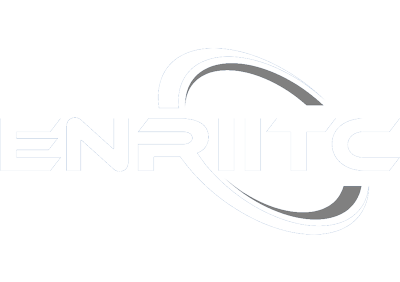
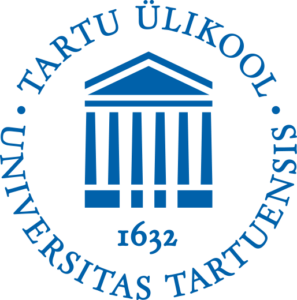
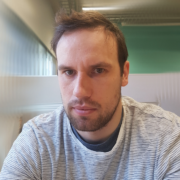
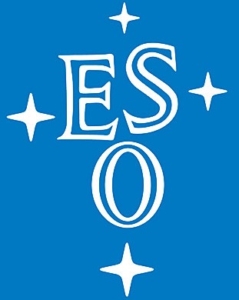
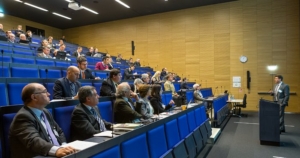
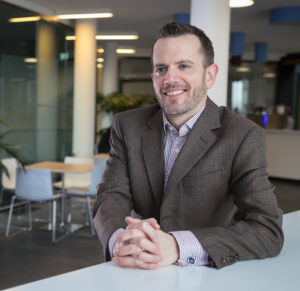

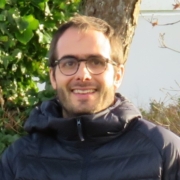
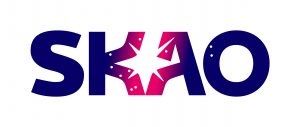

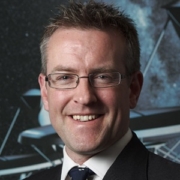


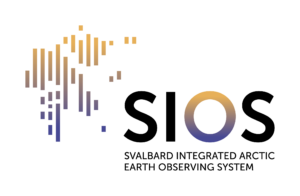

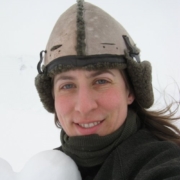

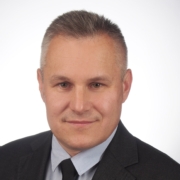



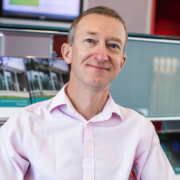
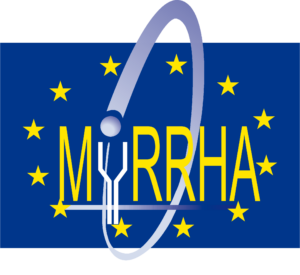


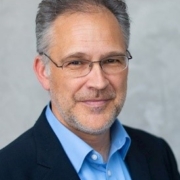

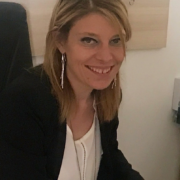
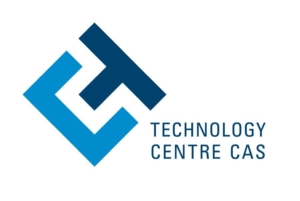


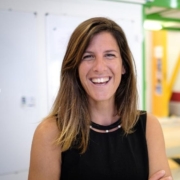

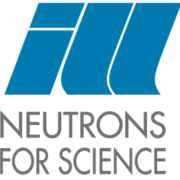
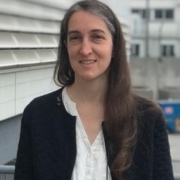
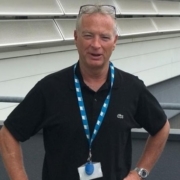


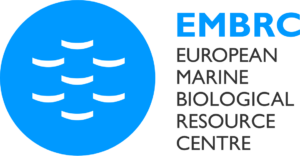
![Photo Nicolas for web[1]-1](https://enriitc.eu/wp-content/uploads/2021/06/Photo-Nicolas-for-web1-1-180x180.jpg)
